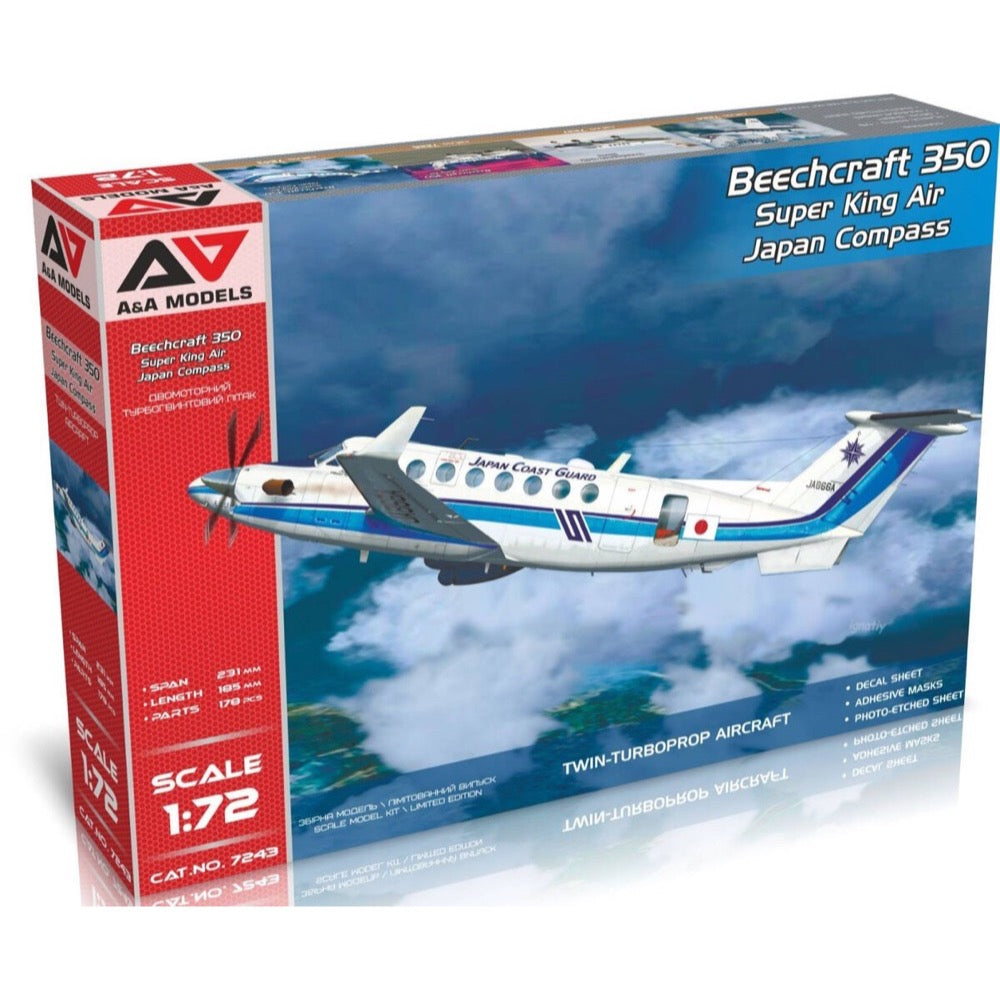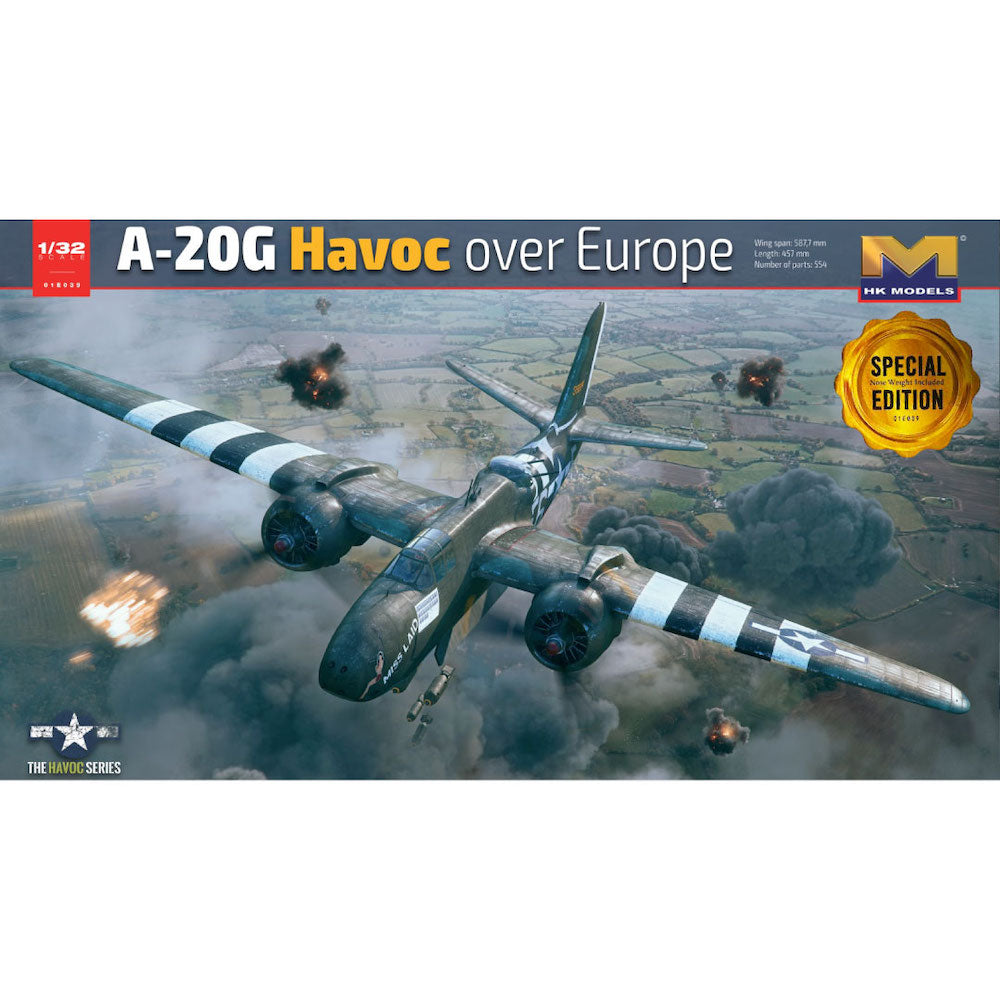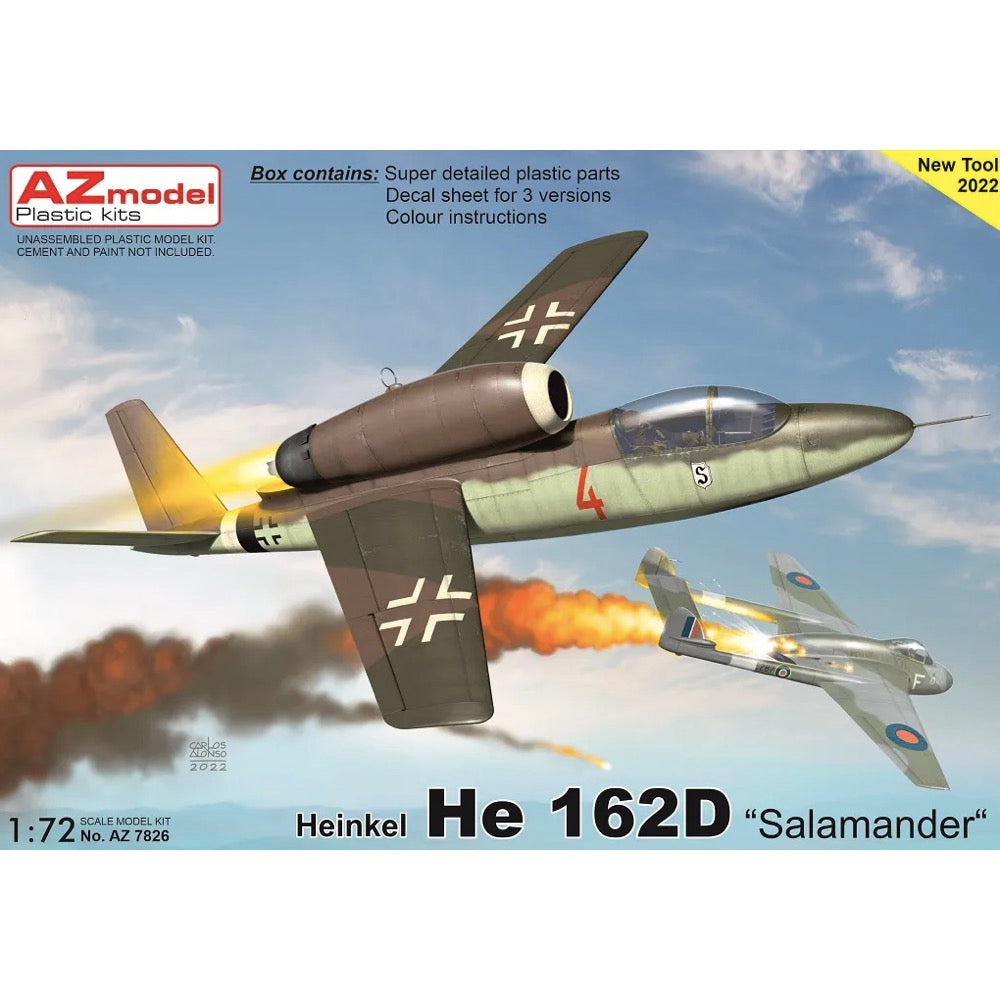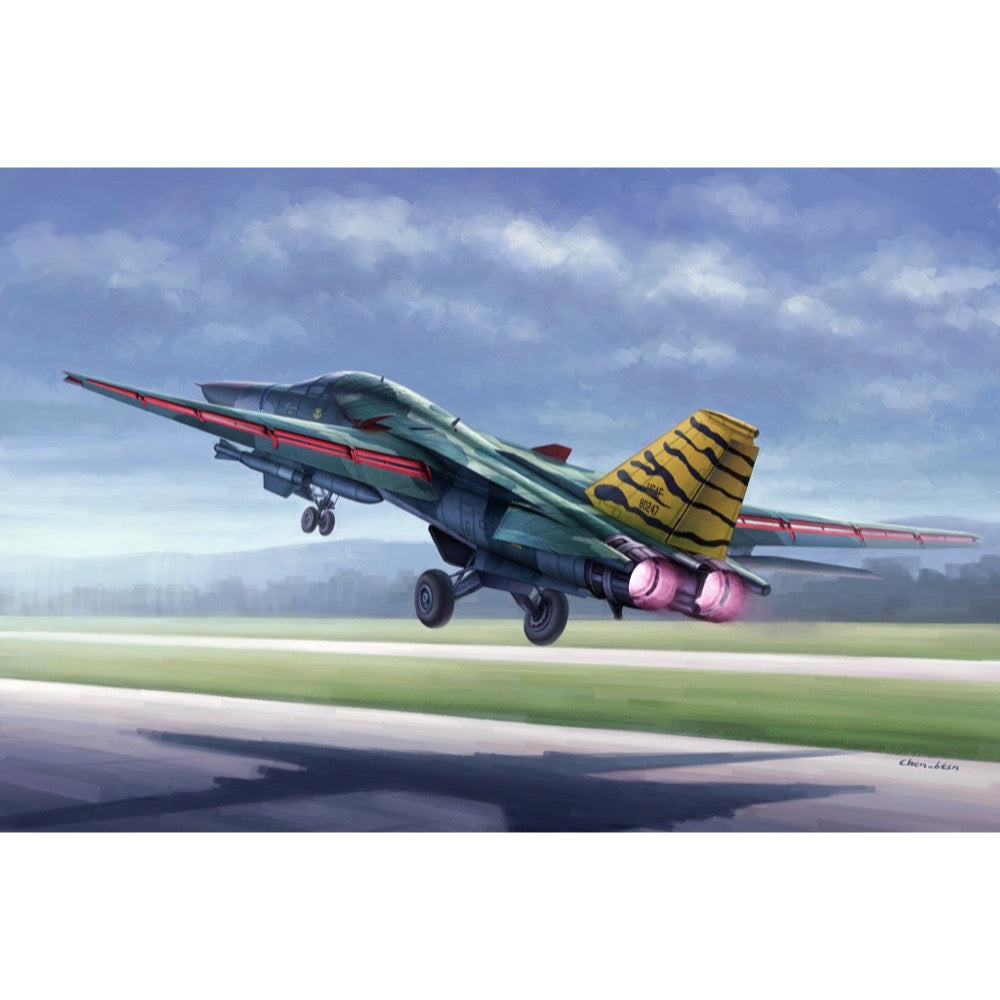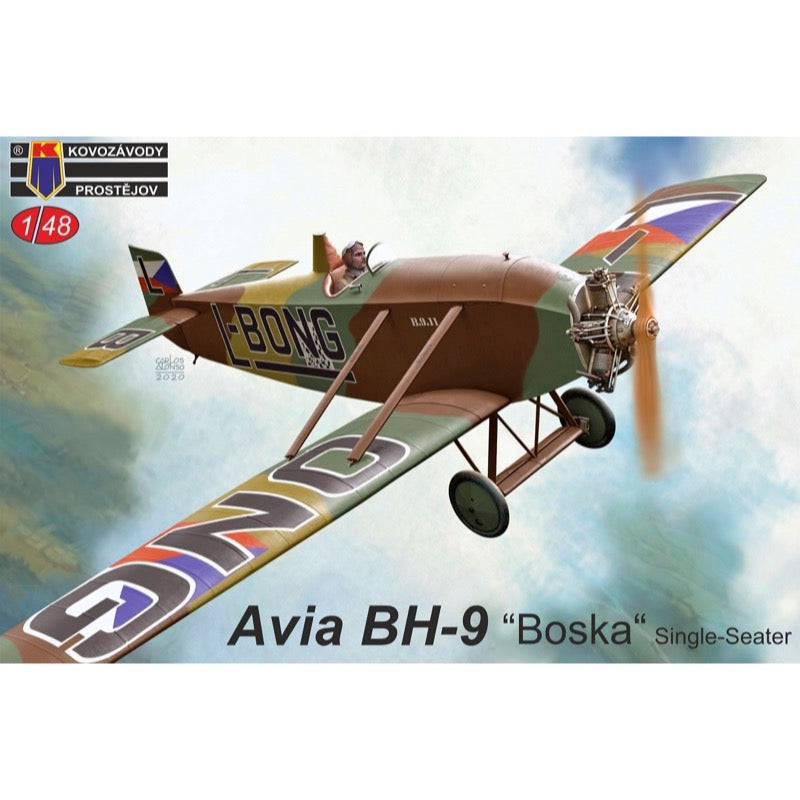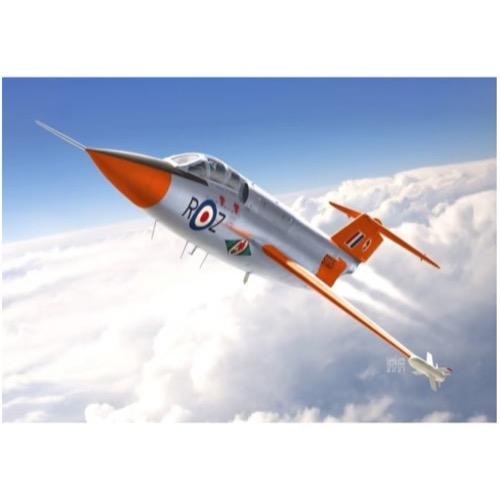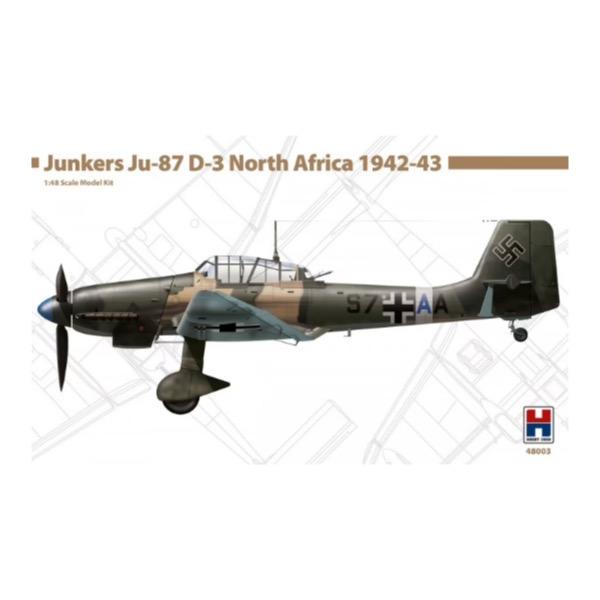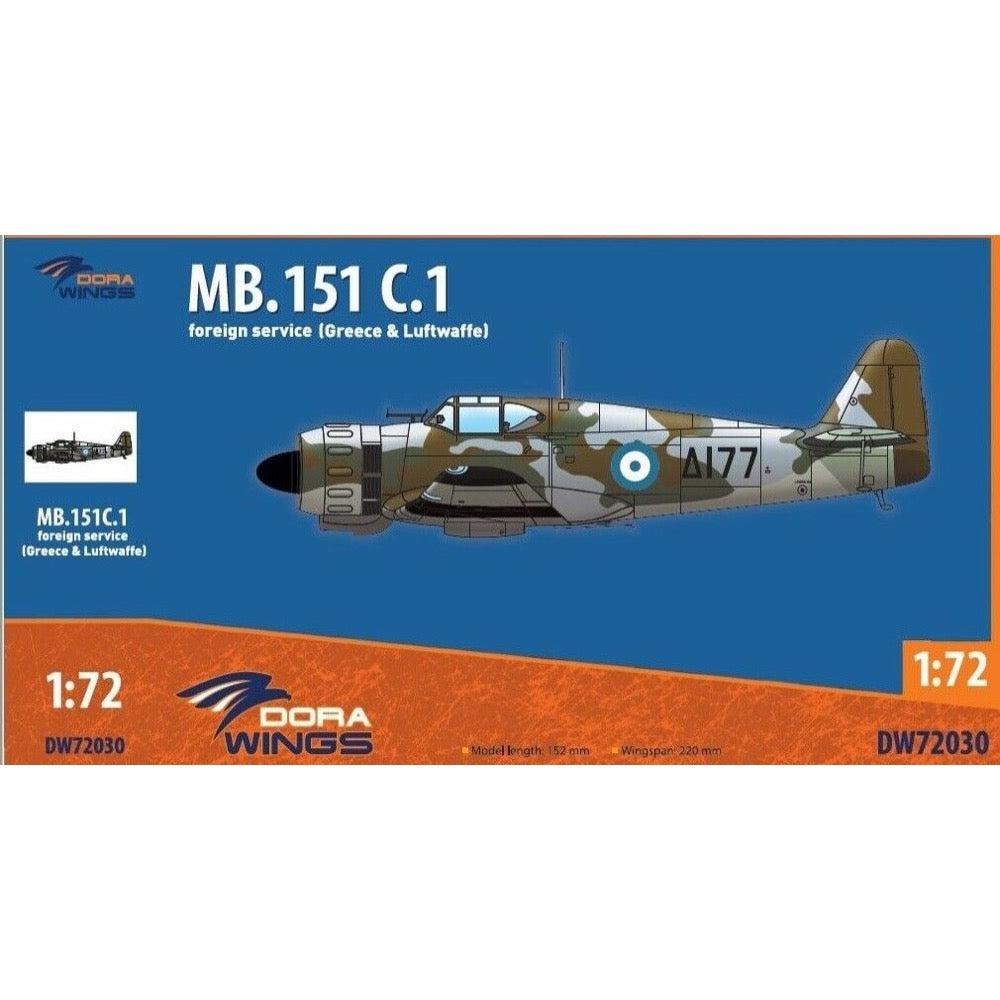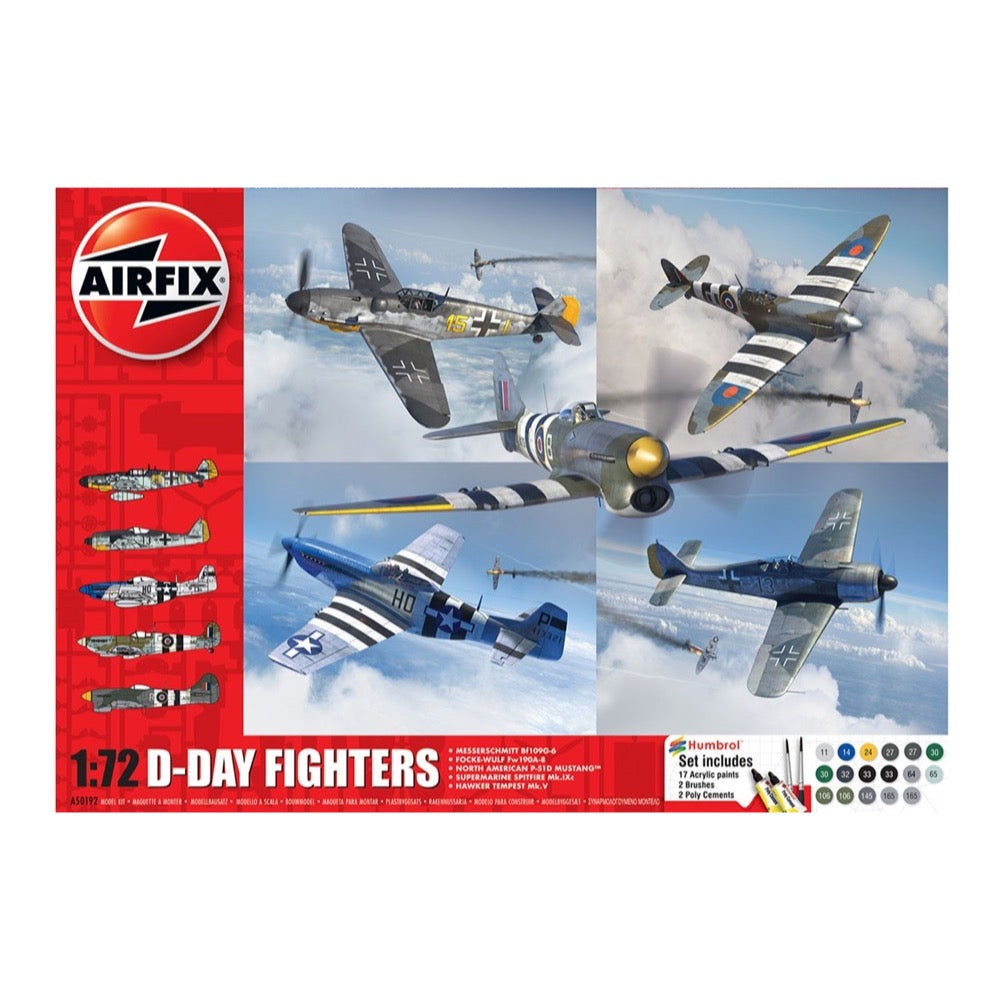
Airfix 50192 1/72 D-Day Fighters Gift Set
45.00
$
<p>The importance of the role air power played in the months leading up to D-Day cannot be overstated, with the Allied powers knowing that securing superiority of the skies over the proposed landing beaches could be the difference between success and failure of the entire operation.</p><p>That being the case, Allied air forces were committed in ever-increasing numbers from the end of 1943, attacking airfields, supply infrastructure and other strategic targets, and mounting hundreds of diversionary attacks. This was all intended to keep German forces guessing as to the location of the anticipated invasion, but all the time diminishing their ability to respond to the landings when they came.</p><p>With so many Allied aircraft expected to be in the air supporting Operation Overlord, Allied Commanders were concerned about the possibility of their aircraft coming under attack from friendly forces both in the air and from anti-aircraft units on the ground.</p><p>They issued a directive that all aircraft (with some exceptions, including four-engined heavy bombers) be painted with identification markings around their wings and rear fuselage, under the strictest levels of security.</p><p>The order to begin applying markings to troop transport, aircraft was not issued until 3rd June 1944, with other units receiving their instructions the following day. This move placed additional pressure on airfield staff already working at maximum capacity.</p><p>On D-Day itself, over 13,000 individual sorties were flown by Allied aircraft in support of the amphibious landings and although around 127 aircraft were lost for various reasons during those operations, it's thought that the adoption of invasion makings significantly reduced numbers succumbing to incidents of friendly fire on that momentous day.</p><p>Although the Luftwaffe were conspicuous by their absence on D-Day itself, they fought tenaciously in the weeks and months which followed, highlighting the fact that they were far from finished.</p><h3>Includes</h3><ul>
<li>Supermarine Spitfire Mk.IXc – 26 parts</li>
<li>North American P-51D Mustang – 53 parts</li>
<li>Messerschmitt Bf109G-6 – 41 parts</li>
<li>Hawker Tempest Mk.V – 72 parts</li>
<li>Focke-Wulf Fw190A-8 – 53 Parts</li>
</ul><h3>Specifications</h3><ul>
<li>Item Length - Without Packaging (cm): 14.4</li>
<li>Item Width - Without Packaging (cm): 17.4</li>
<li>How many pieces will be found in the box opened by the customer?: 41/53/53/38/72</li>
<li>Item Scale: 1:72 Scale</li>
<li>License line: BAE SYSTEMS is a registered trade mark of BAE Systems plc. Produced under license. (Vehicle/Aeroplane Models) the distinctive logos, product markings and trade dress are all trademarks of The Boeing Company.</li>
<li>Contents (what's in the box) sets: Plastic kits, instruction sheets, paint guide, acrylic paint, poly cement, brushes and decal sheet.</li>
<li>Finish: Plastic</li>
<li>Number of Scheme options: 1</li>
<li>Skill Level: 1</li>
<li>Flying Hours: 2</li>
<li>Wingspan (mm): 174</li>
</ul>
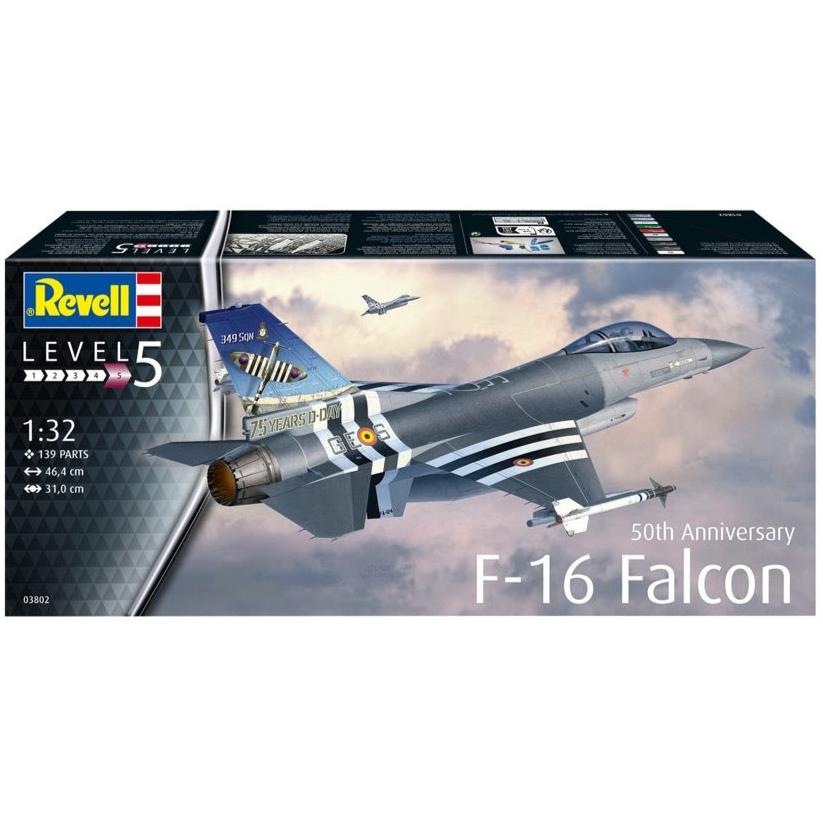
Revell 03802 1/32 F-16 Falcon 50th Anniversary
41.00
$
<h3>Celebrate with this Level 5 Model Kit</h3>
<p>The 50th Anniversary F-16 Falcon Model Kit represents half a century of aviation history in a stunning 1:32 scale. With a total of 150 parts, this kit offers a challenging and rewarding experience for model building enthusiasts aged 13 and up. Spanning a length of 453 mm, a height of 159 mm and a wingspan of 295 mm, this highly detailed kit is an imposing model that captures the power and elegance of the F-16 Falcon in every detail.</p>
<h3>Features</h3>
<ul>
<li>Celebrate the 50th anniversary of the F-16 with this unique model kit.</li>
<li>Experience authentic surface details that enhance the realistic design of the jet.</li>
<li>Enjoy the option to model the chassis to your liking.</li>
<li>Immerse yourself in the depth of detail of the cockpit and ejection seat.</li>
</ul>
<p>This Level 5 model kit is ideal for experienced modelers who want to challenge their skills and knowledge with a complex project. It requires in-depth knowledge and skills in model making, including gluing and painting.</p>
<h3>Contents</h3>
<ul>
<li>150 precision-crafted parts</li>
<li>Detailed cockpit including dashboard</li>
<li>Modular landing gear (optionally retracted or extended)</li>
<li>Realistically designed ejection seat</li>
<li>Authentic surface details</li>
<li>Exclusive anniversary décor elements</li>
</ul>
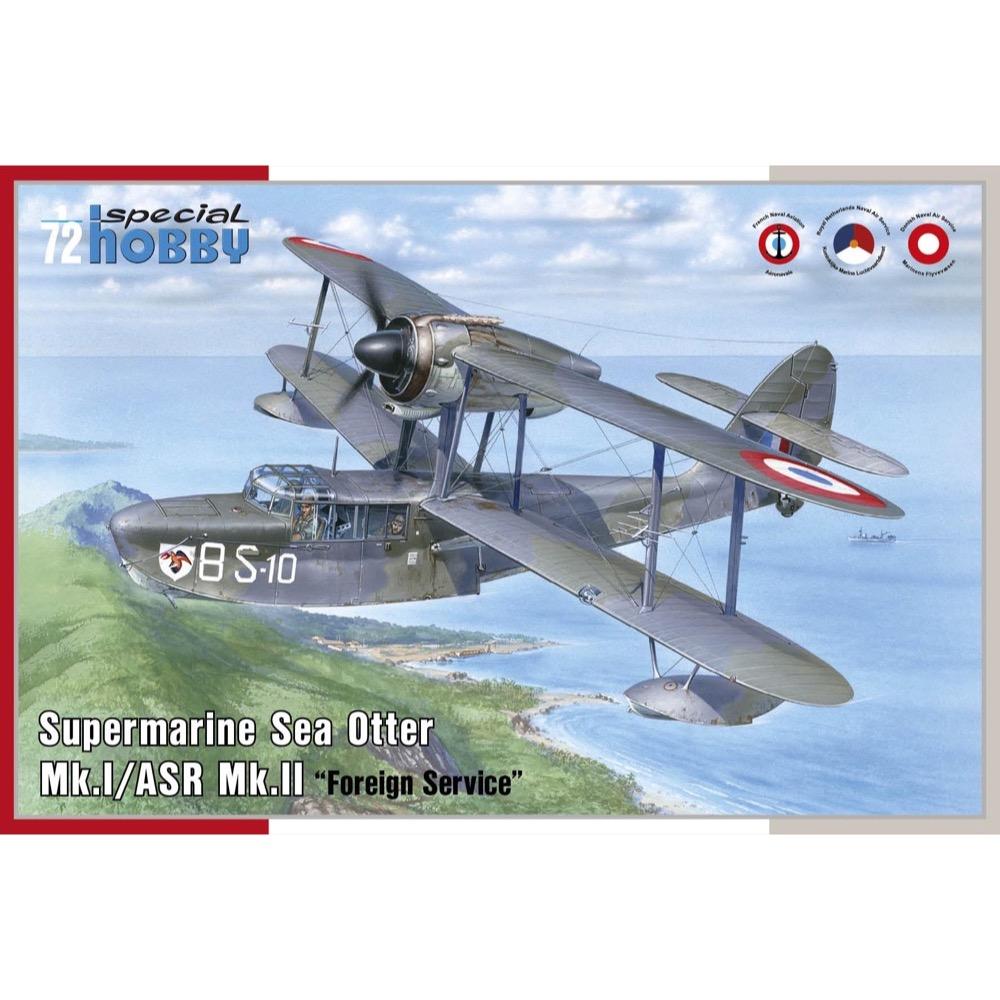
Special Hobby 72431 1/72 Supermarine Sea Otter Mk.I/ASR Mk.II Foreign Service
22.00
$
<h3>“Foreign Service”</h3>
<p>Unassembled plastic model kit in 1/72 scale of a British Supermarine Sea Otter biplane flying boat aircraft introduced in 1944 used as air-sea rescue.</p>
<p>Around 290 units were built in two variants, MK.I as reconnaissance and communications and Mk.II as rescue aircraft.</p>
<p>The type was mainly operated by RAF and Royal Navy, but it also saw service with other countries such Netherlands, France, Australia or Egypt. The kit is devoted to some of these foreign users and includes decal sheet with markings for French, Dutch and Danish forces, one for each.</p>
<p>This model kit from Special Hobby includes photo-etched parts, resin parts, and decals for three versions: France, Netherlands and Denmark.</p>
<h3>Specifications</h3>
<ul>
<li>
<p>Item Size: 30.2cm x 20.3cm x 5.2cm</p>
</li>
</ul>
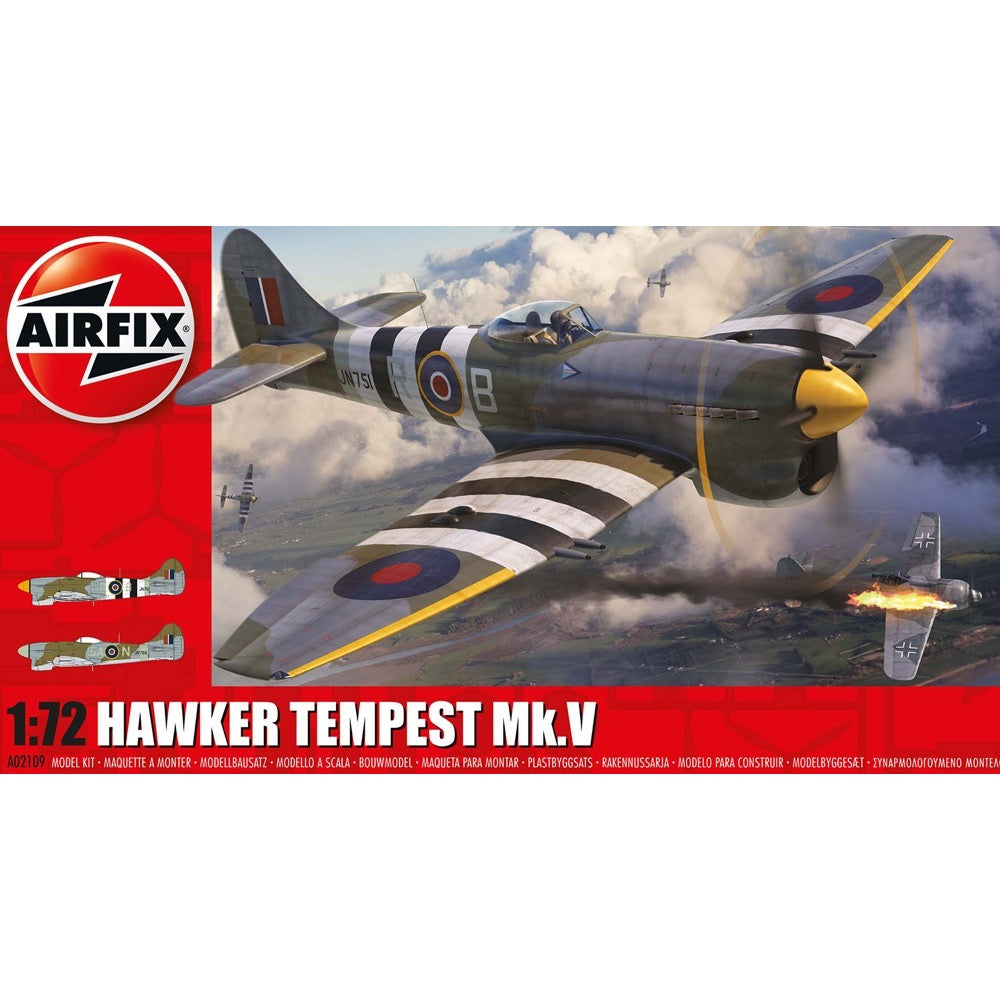
Airfix A02109 1/72 Hawker Tempest Mk.V
10.00
$
<h3>Hawker Tempest Mk.V</h3>
<p>An aircraft which has to be considered one of the finest aeroplanes of the Second World War. The Hawker Tempest V entered Royal Air Force service in early 1944 and was a real brute of an aeroplane, fast, heavily armed, and possessing performance that could better any fighter the Luftwaffe had in service.</p>
<ul>
<li>1:72 Scale</li>
<li>Wingspan: 173 (mm)</li>
<li>Highly Detailed Model</li>
<li>New Mould</li>
</ul>
<p>An aircraft which has to be considered one of the finest aeroplanes of the Second World War, the Hawker Tempest V could trace its design lineage back to the Hurricane fighters which proved so decisive during the Battle of Britain only two years earlier, but would represent the absolute zenith of piston engined fighter design. Indeed, when accomplished designer Sydney Camm was looking to produce his '˜Super Hurricane'™ replacement for the aviation saviour of the Battle of Britain, the aircraft he surely had in mind was the Tempest V. As it was, the Tempest is often confused with its predecessor in Royal Air Force service, the Typhoon, even though the two are very different aeroplanes.</p>
<p>The original fighter replacement for the Hawker Hurricane was the Typhoon, an aircraft which attempted to combine the most powerful piston engine available at the time with a small, yet strong and heavily armed airframe. Although intended as an interceptor fighter, it became apparent during development that the new aircraft would not be able to fulfil this role, as the thickness of the wing was not conducive to high performance at high altitude. In fact, the Typhoon would endure quite a troubled development and service introduction, to the point where cancellation of the programme was seriously considered at one time. Nevertheless, the Typhoon would eventually go on to find its aviation niche as a hard-hitting ground attack aircraft and one which would come into its own during the time of the Allied invasion of Normandy.</p>
<p>Aware that their Typhoon had great potential but was in need of improvement, the Hawker design team started work on a new fighter project, one which incorporated many of the same philosophies as Typhoon, but also, several significant modifications. Indeed, the new aircraft was initially referred to as the Typhoon Mark II, but this was changed to Tempest as the prototype aircraft'™s first flight approached. Although this was still a big aeroplane for a single engined fighter, its airframe was light and it would be powered by the massively powerful 24 cylinder Napier Sabre engine, a powerplant which would give the new fighter spectacular performance. Making its first flight on 2nd September 1942, the new Hawker Tempest featured a newly designed laminar flow wing, which was much thinner than the wing used on its predecessor and allowed the new fighter to slip through the air at incredible speed.</p>
<p>At first glance, the Typhoon and Tempest do share many similarities, however, if you know where to look, it is not difficult to tell them apart. Without doubt, the wing is the most obvious distinguishing feature, as not only is this thinner than the one used on the Typhoon, it is also a completely different shape. With a straighter leading edge and more elliptical trailing edge, the Tempest'™s wing was designed for speed, even though it could still be used effectively in a ground attack role. Other Tempest design differences include a slightly longer nose and a tail section which appears to be much larger, with a more generous vertical stabiliser which features a pronounced dorsal fillet. During the prototype aircraft'™s maiden flight, it posted an impressive top speed of 477 mph in level flight, impressing both the design team and the watching Air Ministry.</p>
<p>The Hawker Tempest V entered Royal Air Force service in early 1944, with the first two squadrons to receive the type having both previously operated the Typhoon. It was thought that managing the incredible power generated by the Tempest'™s engine could pose problems for pilots converting from smaller aircraft types and that former Typhoon units would be best placed to negotiate its squadron introduction. In advance of the D-day landings, Tempests were being used in a similar ground attack role to the one being flown so effectively by Typhoon squadrons, however, should it be required to make the shift to air combat operations mid-mission, the Tempest was much more suited to this task. Possessing significantly greater range than the Typhoon, Tempests could loiter in the combat zone for longer periods, allowing offensive strikes deeper into occupied Europe, or allowing pilots to wait patiently for the Luftwaffe to come up and fight, where they could show them what their new fighter could really do.</p>
<p>As the fastest Allied fighter at low and medium altitudes, Tempest squadrons were held back for home defence duties in the weeks which followed the successful D-day landings, due to the onslaught of a sinister new weapon, the V-1 '˜Doodlebug'™ pulse jet flying bomb. The Tempest proved to be an excellent V-1 killer, using the speed of the fighter, effectiveness of its guns and bravery of its pilots to destroy large numbers of these terrifying weapons before they could wreak their havoc on British towns and cities. Britain'™s most effective force against these indiscriminate weapons, hundreds of Doodlebugs were shot down by the RAF'™s Hawker Tempest V squadrons, with Squadron Leader Joseph Berry proving to be the most proficient at this work, with no fewer than 61 V-1 '˜kills'™ to his name.</p>
<p>With the V-1 threat diminishing, the RAF'™s Tempest V squadrons were free to embark on aggressive seek and destroy missions into occupied Europe, using the speed, range and firepower of their latest fighter to great effect. Looking for potential V-1 launch sites and increasingly, the new German jet fighters which had started operating against the Allied air forces, the Tempest began to show that it was undoubtedly one of the most capable fighting aeroplanes in the world. Indeed, it has been reported that the aggressively flown Tempest was the Allied aircraft Messerschmitt Me262 jet pilots most feared during those early days of jet powered operations, particularly if they were caught during the landing and taking off phases of flight, when their jets were much more vulnerable.</p>
<p>There is no doubt that the Hawker Tempest V was a real brute of an aeroplane, fast, heavily armed and possessing performance which could better any fighter the Luftwaffe had in service, perhaps with the exception of the Me262 at full speed. Pilots who had experience flying both the Tempest V and its predecessor, the Typhoon, describe the difference as being like night and day - they actually said that it was like comparing a cart horse with a race horse. Although this seems a little harsh, as they flew the aircraft in combat, we should certainly bow to their judgement. Although appearing relatively late in WWII, the Tempest V still takes its place as one of the most effective piston engined fighters of the Second World War and was perhaps the '˜Super Hurricane'™ designer Sydney Camm had always envisaged developing.</p>
<h4>Includes</h4>
<ul>
<li>Sprues</li>
<li>Decals</li>
</ul>


